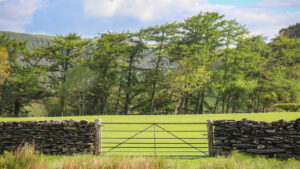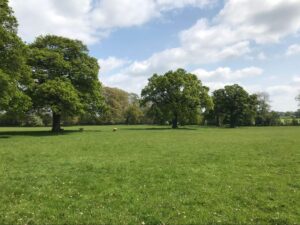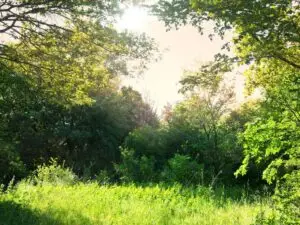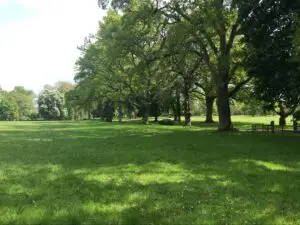
Biodiversity Gain Site Register: Key Facts for Landowners and Developers
The Biodiversity Gain Site Register is a statutory tool underpinning mandatory BNG (Biodiversity Net Gain) under the Environment Act 2021. It records sites legally committed to delivering off-site biodiversity units, forming a vital part of the biodiversity gain hierarchy. Whether you’re a landowner looking to generate income from your own land or a developer aiming to secure planning permission, understanding this public register is essential. This article outlines the biodiversity gain site register key facts for landowners and developers, clarifying roles, responsibilities, and how Civity supports the process. What Is the Biodiversity Gain Site Register? Launched by Natural England, the gain site register lists all legally secured biodiversity gain sites in England. These sites produce biodiversity units through habitat creation or habitat enhancement and are used to offset habitat lost on development sites that cannot meet their BNG requirement on-site. To appear on the register, a site must have: A legal agreement in place (either a Section 106 planning obligation or a Conservation Covenant with a Responsible Body) A compliant Habitat Management and Monitoring Plan (HMMP) Completion of registration Only registered gain sites can lawfully sell biodiversity units to developers under the current mandatory BNG framework. For Landowners: Unlocking Income Through Registration Registration unlocks the ability to sell biodiversity units from your land, creating long-term income via funded habitat enhancement works. Civity supports landowners through a clear, staged process from free desk-based assessments to full registration on the gain site register. To qualify as a biodiversity gain site, your land must meet the following conditions: Clear land ownership Defined parcels outside any red line boundary of a development site Measurable biodiversity value uplift, demonstrated via the statutory biodiversity metric tool A completed and approved monitoring plan with enforceable legal agreement in place – either an SE106 or Conservation Covenant Agreement Civity manages all legal and administrative steps required to establish a biodiversity gain site, including liaison with the Local Planning Authority or the Responsible Body. We also take care of registering the site with Natural England’s Biodiversity Gain Site Register. We can carry out ecological surveys on gain sites (not on development sites); we work closely with landowners and their ecologists to ensure that baseline assessments and HMMPs meet regulatory and market requirements. We also only begin habitat work once sufficient biodiversity units have been sold to cover full habitat management and delivery costs, reducing financial risk. For Developers: Using Off-Site Units to Achieve BNG Under the biodiversity net gain principle, developers must deliver a minimum 10% net gain in biodiversity. Where this cannot be achieved through on-site gains, off-site biodiversity units from registered sites are required to meet the BNG requirement. Civity offers developers: Access to verified off-site units from our landbanks Support to align with the statutory biodiversity metric Clarification on trading rules and metric tool calculation Assistance in completing the Biodiversity Gain Plan (Schedule 7A) for planning applications We do not assist with securing on-site BNG schemes or DIY off-site BNG on developer-owned land. Instead, we provide a reliable route to secure off-site units backed by compliant registration and legal documentation. Our approach ensures that developers can achieve BNG without needing to navigate complex conservation efforts or engage multiple parties independently. Legal Mechanisms: Section 106 or Conservation Covenant Every gain site must be secured via a legal agreement to ensure delivery for at least 30 years: A Section 106 agreement involves the local planning authority. A conservation covenant involves a responsible body Civity advises on the most appropriate route depending on our working relationship with the Local Authority/Responsible Body and the relative speed and ease of pursuing the SE106 or conservation covenant route. These agreements are central to formalising your commitment to the biodiversity gain objective. Why the Metric Matters All calculations are made using the DEFRA statutory biodiversity metric tool, which assesses the existing habitat, its condition, and the proposed biodiversity enhancements. This tool underpins both the biodiversity gain plan and the allocation of statutory biodiversity units/credits where needed. Each registered site must provide evidence of gains using this metric tool, including: Pre- and post-enhancement/creation assessments Habitat creation targets and delivery rates Long-term management and monitoring schedules Benefits of Working with Civity For Landowners: No need to deal directly with planning authorities or Responsible Body; we manage the full process Fixed minimum payments adjusted for inflation over 31 years Retention of rights to other potential income streams (e.g., nutrient neutrality) Ongoing payments for management, including contingency funding and surplus sharing For Developers: Access to fully compliant off-site BNG units Support aligning biodiversity net gain with local policies and planning permission Confidence that units are from a registered, auditable biodiversity gain site (or will be registered by the time are units are required in full). Streamlined coordination across legal, ecological, and commercial aspects Registration Is a Statutory Requirement Only off-site biodiversity gains need to be registered on Natural England’s Biodiversity Gain Site Register. On-site habitat enhancements, while subject to metric validation and planning authority approval, do not require registration on the national register. For off-site units to be valid and credited toward the developer’s 10% Biodiversity Net Gain, they must be traceable via a formal legal agreement (Section 106 or Conservation Covenant) and appear on the register. Attempting to meet BNG requirements without using the statutory biodiversity mechanisms will likely result in planning applications being refused or subject to delay. At Civity, we ensure every unit transacted is tied to a legally secured, verifiable biodiversity enhancement aligned with national regulations and supported by a robust monitoring plan. Enabling Legal, Transparent Nature Recovery The Biodiversity Gain Site Register is more than a record; it’s the statutory foundation for credible conservation efforts across England. For developers, it safeguards the integrity of your planning permission. For landowners, it transforms land into a reliable long-term income source. Through Civity, you can engage confidently with this process, whether you’re aiming to sell biodiversity units or secure compliant off-site gains.






